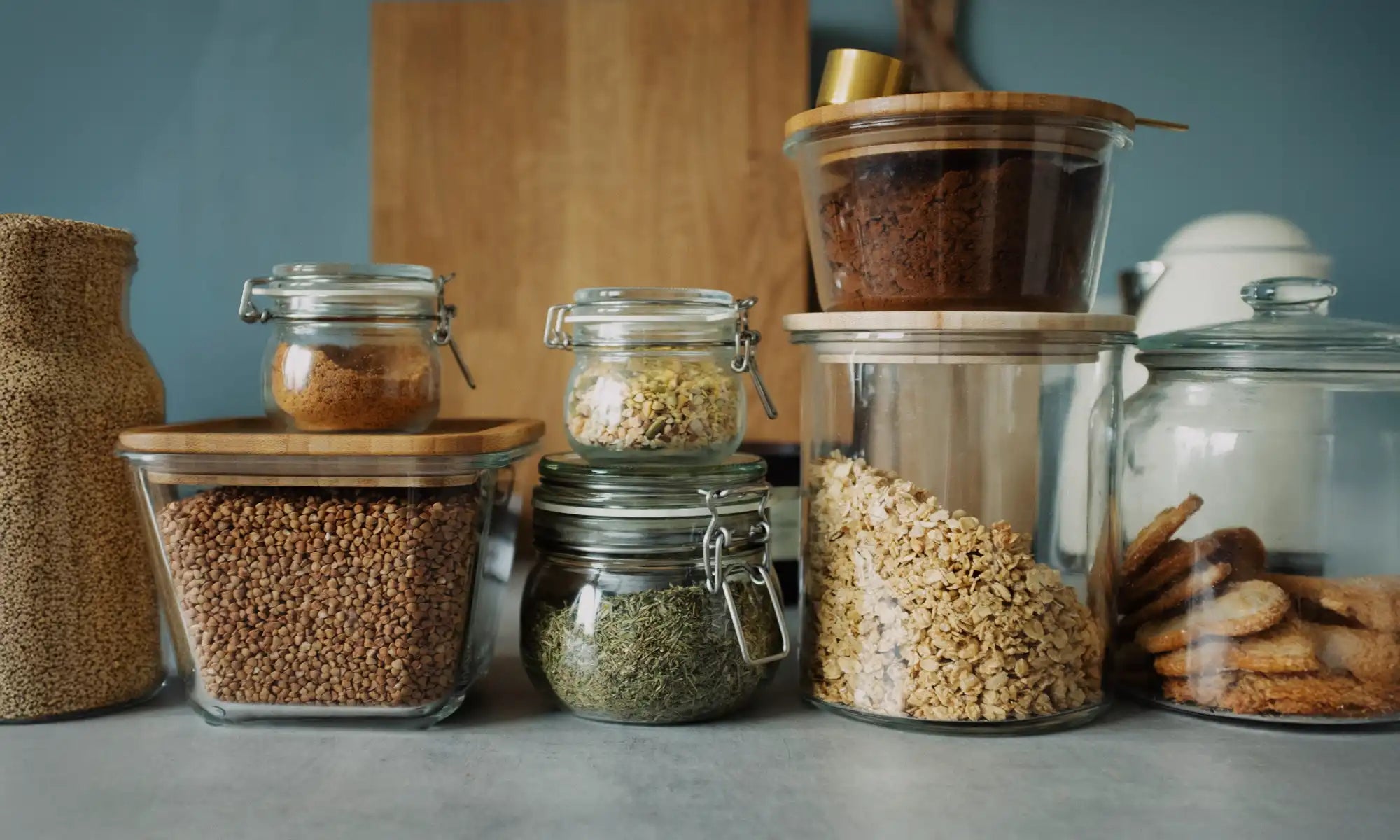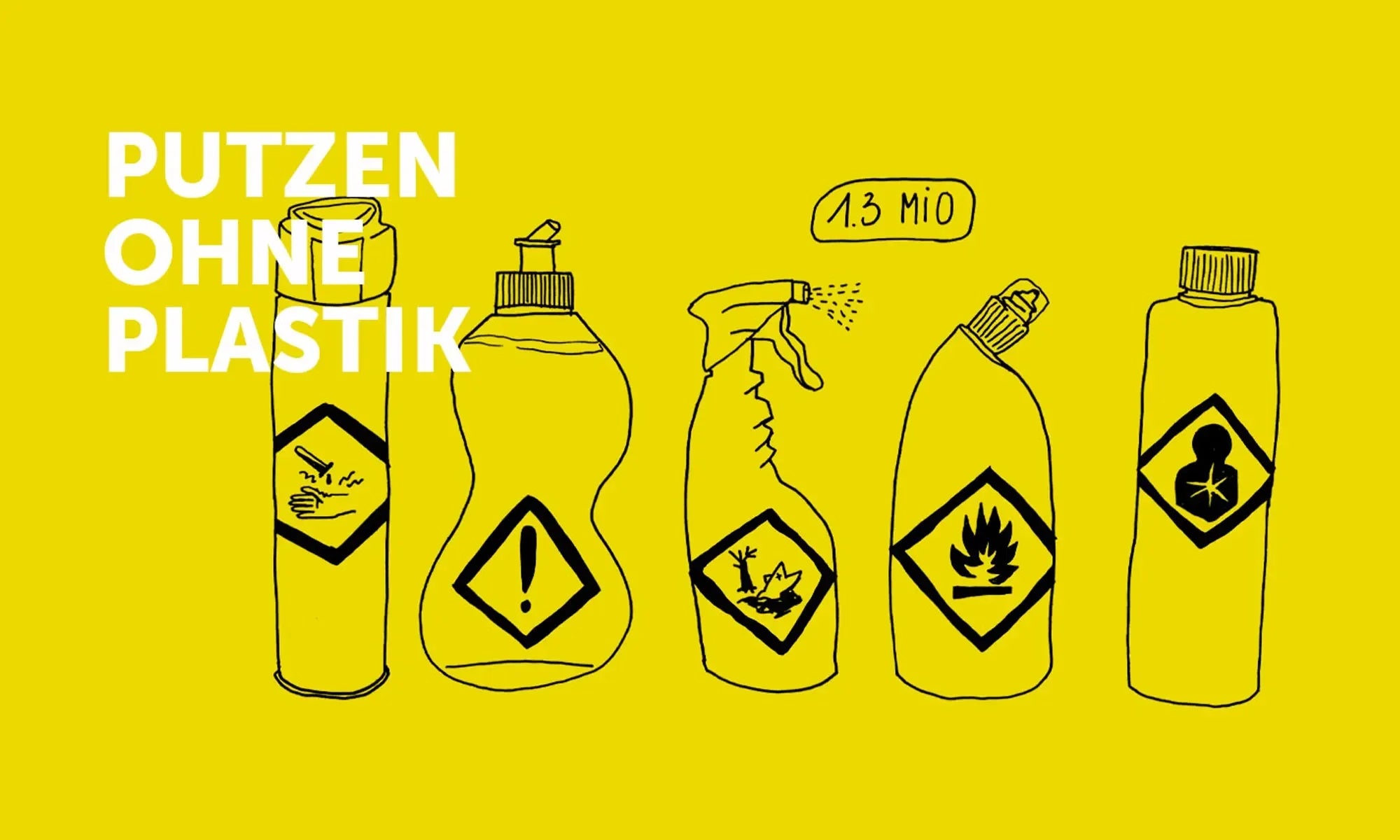Article: Living plastic-free: 6 simple tips for your kitchen

Living plastic-free: 6 simple tips for your kitchen
Whether it's cereal packaging, disposable bottles, or tetra packs, declaring your kitchen a plastic-free zone might sound like an impossible task. But it's not – at least significantly reducing plastic waste isn't that difficult! We have 6 practical tips for you.
You already know how to go plastic-free in the bathroom and on the go, and why we urgently need to do something about our plastic waste. And of course, you also know: If you regularly drink from your water bottle , you can safely do without plastic bottles. But there's more to it than that – let's continue the triumphant march into the kitchen.
What is actually in the plastic?
A full 40% of plastic waste worldwide comes from single-use packaging. It's obvious that much of it ends up in our kitchens. Not just pasta packages, ice cream, and cereal, but increasingly also pre-cut vegetables, ready-made salads, beverages, and shrink-wrapped cheese and meat products: all in plastic.
Plastic is made from petroleum—a shocking amount of petroleum, we think. A single plastic bottle requires a quarter of its volume in oil to produce. Added to that is twice as much water as the bottle actually contains. The extraction, processing, and trade of petroleum are known for causing environmental damage. Even plastic recycling is still not the solution. But what exactly can you do to make your kitchen plastic-free—or at least more plastic-free than it is now?

1. Analysis: What is in my yellow bag?
Step one to a plastic-free kitchen begins with detective work. Before we can change anything, we need to take stock. So grab that yellow bag and take a look inside. What do you find? Yogurt, cheese, and milk packaging? Rice and pasta bags? Or maybe chocolate wrappers? Make a list and identify what you use most often.
Important: The goal here is neither to make you feel ashamed nor bad, but simply to raise awareness and gain an overview.
2. Be so free and buy naked
The easiest way to reduce plastic in the kitchen is to simply shop naked – especially when it comes to fruit and vegetables. Because nobody really needs an extra bag for two tomatoes or three wrapped peppers. Forgo pre-packaged bundles of fresh produce and the free plastic bags and instead bring your own fruit and vegetable nets to refill. Or you can do something really crazy and simply load your produce loose onto the conveyor belt.
Not quite naked, but still plastic-free, you can also get your vitamins saved: Our dear friends at etepetete send organic boxes of fruit and vegetables that would otherwise have ended up in the trash.

3. One to fill, please!
But it's not just fruit and vegetables that are available "without" packaging – you can do the same with other foods as well. More and more cities now have packaging-free stores where you can shop with your own screw-top jars, cotton bags, and storage containers, such as those from Avoid Waste. Your soulbottle is also perfect for filling!
From chocolate to teas, spices, and pulses to nuts, grains, cornflakes, and pasta, most unpackaged stores have a lot to offer. An overview can be found at enorm , for example.
4. Plastic-free kitchen: What about cheese, sausage and tofu?
It seems a bit like a multi-level game, this life without plastic. If you've made it to step three, give yourself a pat on the back.
You can also get meat and dairy products (and sometimes tofu) without packaging! Bring your own lunchbox and get them at the market, from small businesses, or at supermarket counters. You can find out who's participating using the "One without, please" directory.
You can also eliminate all packaging for your cereal milk by making your own plant-based milk. A simple recipe for oat milk:
For homemade oat milk, simply add to the blender:
- 150 g oat flakes (preferably soft-flavored)
- 1 liter of water
- a pinch of salt
- something sweet (e.g. 2-3 dates, a spoonful of agave syrup or honey)
Then strain everything through a fine sieve, nut bag, or nylon stocking. Pour it into the soulbottle – done!
5. Oilcloth instead of plastic wrap
You can also keep your kitchen plastic-free at home: Use cans or jars, bread bags, and replace plastic wrap with waxed cloths. These adapt to the warmth of your hand and are reusable. They're available with beeswax or vegan. Our lovely Kerstin has a DIY video on how to do it:
6. Do it yourself!
The more we avoid plastic, the healthier we tend to be. Homemade products reduce waste and require less industrial processing. So: bake, cook, mix! This way, you gain control over your ingredients and the environment.
And now: Get louder
Are you passionate about this? Great! Sign up for petitions against single-use plastic or coffee-to-go cups . You can find more ideas at Impact Revolution or the Zero Waste Association .
Soulbottles is also speaking out – with projects like WASH'n'soul and the Water is Political campaign. Over 2.2 billion people lack access to clean drinking water – we need to speak out!
Happy plastic and water saving!

